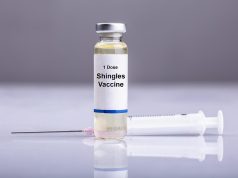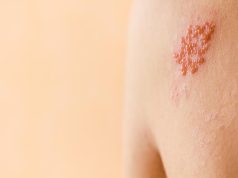However, review showed significantly increased incidence of Bell palsy in vaccine recipients versus those receiving placebo
By Lori Solomon HealthDay Reporter
TUESDAY, May 2, 2023 (HealthDay News) — Incidence of Bell palsy is significantly more common following severe acute respiratory syndrome coronavirus 2 (SARS-CoV-2) infection than after receipt of SARS-CoV-2 vaccinations, according to a review published online April 27 in JAMA Otolaryngology-Head & Neck Surgery.
Ali Rafati, M.D., from Iran University of Medical Sciences in Tehran, and colleagues conducted a systematic literature review to compare the incidence of Bell palsy in people receiving COVID-19 vaccines versus unvaccinated individuals or placebo recipients.
The researchers found that when pooling data from four phase 3 randomized clinical trials, Bell palsy incidence was significantly higher in recipients of COVID-19 vaccines versus placebo recipients (77,525 vaccine recipients versus 66,682 placebo recipients; odds ratio [OR], 3.00; 95 percent confidence interval [CI], 1.10 to 8.18). However, there was no significant increase seen in Bell palsy after administration of messenger RNA SARS-CoV-2 vaccines (eight studies; 13,518,026 doses versus 13,510,701 unvaccinated; OR, 0.70; 95 percent CI, 0.42 to 1.16). There was no significant difference in the incidence of Bell palsy among 22,978,880 first-dose recipients of the Pfizer/BioNTech vaccine versus 22,978,880 first-dose recipients of the Oxford/AstraZeneca vaccine (OR, 0.97; 95 percent CI, 0.82 to 1.15). Furthermore, Bell palsy was significantly more common after SARS-CoV-2 infection (2,822,072) compared with after COVID-19 vaccinations (37,912,410; relative risk, 3.23; 95 percent CI, 1.57 to 6.62).
“This study shows evidence for the association between SARS-CoV-2 and Bell palsy; however, this finding does not equate to causality, and further research is required to verify this association and investigate possible mechanisms,” the authors write.
Copyright © 2023 HealthDay. All rights reserved.








